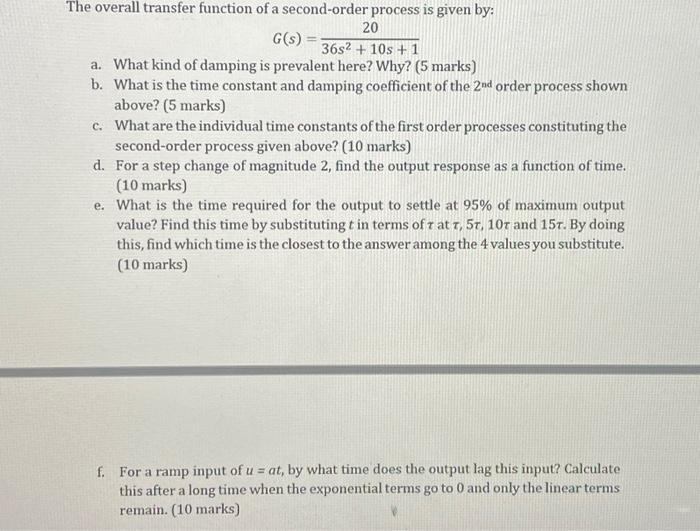Answered step by step
Verified Expert Solution
Question
1 Approved Answer
G(s)=36s2+10s+120 a. What kind of damping is prevalent here? Why? ( 5 marks) b. What is the time constant and damping coefficient of the 2nd

Step by Step Solution
There are 3 Steps involved in it
Step: 1

Get Instant Access to Expert-Tailored Solutions
See step-by-step solutions with expert insights and AI powered tools for academic success
Step: 2

Step: 3

Ace Your Homework with AI
Get the answers you need in no time with our AI-driven, step-by-step assistance
Get Started


